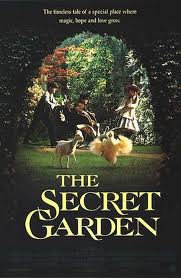Present word count of WIP: 47,161 (I know…no increase, but I did finish outlining the entire book!)
 I am very excited to announce that Walnut Springs Press will be publishing my second novel, Laps (though the title will likely be different), later this year…probably late summer or early fall! I promise more details as they develop.
I am very excited to announce that Walnut Springs Press will be publishing my second novel, Laps (though the title will likely be different), later this year…probably late summer or early fall! I promise more details as they develop.
I believe I have the recent ANWA Conference to thank for helping to seal this deal. While there, I was able to meet with their editor, Linda Mulleneaux, and I’m sure that my winning a couple of awards in their BOB (Beginning of Book) Contest made a favorable impression, as well. Thanks so much, ANWA!
Here’s a taste of the book (taken from my first chapter) to whet your appetite:
Budding writers could be so defensive, Daphne thought, not for the first time. The women she taught in her graduate tutorial bruised like teenagers, pouting and suffering in silence. Most of the men argued with their jaws clenched—none more so than Reuben. She picked up his short story anyway, drew in a breath, and read aloud his opening sentence.
“Merrick languished in the lazy afternoon sun.” She paused and looked up at the clock on the back wall. Five minutes to go. “To be honest, this opening takes the reader nowhere. Yes, it may tell us Merrick is lazy . . . or it may not.”
Reuben raised his hand, the muscles in his face already working, and began to squabble with her assertion. Guy, the only truly talented writer in the class, wasn’t there to take her side. So she chewed on the inside of her cheek as Reuben went on and on about the visual quality of “languished.”
When he finished, she said, “I suppose you don’t care about getting published then,” and dismissed the class. As he passed her desk, she heard him call her “narcissistic” under his breath along with another unflattering term. He was wrong. She hadn’t found the right word for herself yet, but she was definitely not narcissistic.
Still stressed when she pulled into her garage a half hour later, Daphne headed straight for her pool. She checked the desert sky. No moon. She’d swim without a suit, then, shielded by the wall of palms, hibiscus, and oleander surrounding her backyard. Since the death of her parents, she’d used moonless nights to such advantage.
As she started to unbutton her blouse, she noticed that one of the four dark shapes she knew to be her patio chairs had been moved back several inches from the circular glass table with the umbrella. A sense of foreboding crept up the back of her neck like a spindly-legged spider, and she shivered. She never left a chair out of place.
For a moment, Daphne considered changing her routine. But she couldn’t. The swim in total blackness wouldn’t soothe if she varied the pattern, and though she didn’t understand the reason, she knew that patterns smoothed out the wrinkles in her life like lotion applied to rough, cracked skin.
She pushed the chair back in and undressed quickly, leaving her folded slacks and blouse on the deck. After stretching out the kinks in her back and running her fingers through her cropped hair, Daphne took her usual starting place at the far side of the pool and sliced into the dark water. Six quick strokes, and she flipped to push off the wall for the return. Ninety-nine laps to go.
She pulled at the water, deconstructing Reuben’s opening line in her mind with each lap.
Merrick languished in the lazy afternoon sun. Flip turn.
Merrick languished in the lazy afternoon. Flip turn.
Merrick languished in the lazy. Flip turn.
By the tenth lap, the classroom began to recede from her mind. By the fifteenth, the last memory of the evening’s unpleasantness sank below her consciousness. Buoyed by the night-cooled water, Daphne relished the pungency of chlorine and the familiar numbness spreading through her arms and legs.
If Daphne bowed to any god, it was the god of water—the pool his holy sanctuary, the daily swim her prayer. Water freed her, saved her from a society in which she felt ill at ease. In its liquid cold and calm, her oddities were masked or erased.
At age three, when she’d first ballooned her cheeks to slip beneath its glimmering surface, Daphne had opened her eyes underwater and discovered a world of muted sounds, bluish vision and slower motion. Here, no fly could dart around. The yapping of the neighbor’s dog hushed. Her feet and hands, often so clumsy on land, worked together in water and found a rhythm previously unknown. Stroke after stroke. Lap after lap. A coordination so practiced over the decades that now, at forty-one, she slashed through the water without thinking.
Swimming saved her in the dry heat of Phoenix where pools freckled the landscape. No matter Daphne’s schedule at the university, her morning swim came first. It steeled her for a college classroom full of opinionated writing students. And if a day’s teaching drained her, as this had, she swam again in the afternoon or night.
Switching to the breaststroke for her twenty-sixth lap, her right hand brushed against something mid-stroke. She jerked upright, surprised. Had she imagined it? Daphne strained to see in the blackness of the pool, but she could make out nothing. She swept her arm across the dark water. Still not a thing. She inched further and propelled her arm underneath the liquid surface. Contact. Wet cloth over a hard object. When she poked it, it moved away, but only slightly. She reached again. Feathery strands tickled her fingers. She lurched back and gasped.
Originally posted 2012-03-16 13:36:26.




